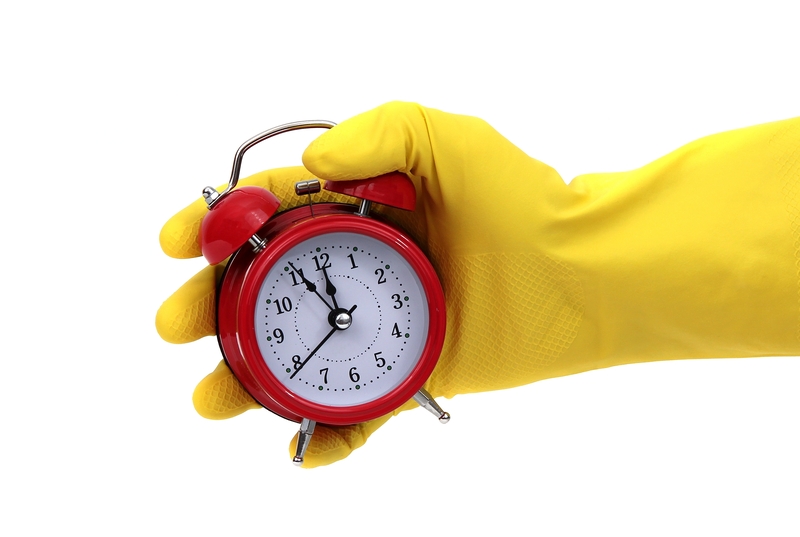Damp Smell Solutions for a Pleasant Home Atmosphere
Posted on 17/08/2025
Damp Smell Solutions for a Pleasant Home Atmosphere
There's nothing quite like walking into your home and inhaling a burst of fresh, clean air. However, for many homeowners, a musty, damp smell can quickly shatter that comforting atmosphere. Whether you live in an old house or a modern apartment, persistent musty odors can impact not just your comfort, but also your health and peace of mind. In this comprehensive guide, we'll explore effective damp smell solutions to help you achieve the clean, pleasant home environment you deserve.
Understanding the Causes of Damp Smells in Homes
Before searching for remedies, it's essential to understand what causes musty odors or damp smells in your living space. Common culprits include:
- Excess moisture: Leaky pipes, roof leaks, or groundwater can raise indoor humidity.
- Poor ventilation: Inadequate airflow allows moisture to accumulate.
- Mold and mildew: These fungi thrive in moist, warm environments and release musty odors.
- Damp fabrics and carpets: Materials that absorb moisture can develop unpleasant smells.
- Condensation build-up: Especially prevalent around windows, in basements, and attics.
Understanding these root causes is the first step in developing a lasting damp odor removal strategy. Next, let's dive into specific solutions you can employ to reclaim a refreshing and inviting home.

How to Recognize Damp Smells in Your Home
Identifying the source of suspicious odors is key. Common signs that indicate an underlying damp issue include:
- A persistent, earthy, or sour scent upon entering certain rooms.
- Visible spots or streaks of mold or mildew on surfaces.
- Water stains on walls, ceilings, or floors.
- Peeling paint or wallpaper.
- Feeling of increased humidity or clamminess.
If you notice any of these symptoms in your house, it's important to take action quickly to prevent the problem from escalating.
Ventilation: Your First Line of Defense
Improving ventilation is one of the simplest and most effective damp smell solutions. Good airflow helps dilute and remove musty odors while preventing the build-up of dampness that allows mold to thrive. Here's how to optimize ventilation in your living space:
- Open windows daily, even in winter, for at least 15-20 minutes.
- Use extractor fans in moisture-prone rooms like kitchens and bathrooms.
- Move furniture slightly away from walls to allow air circulation.
- Install trickle vents in windows or doors if possible.
- Consider using a home ventilation system or air exchanger for persistent problems.
Simple habits like airing out bedding and closets can also reduce trapped moisture and prevent recurring odors.
How to Remove Damp Smell: Proven Techniques
Target the Source, Not Just the Scent
While air fresheners and scented candles may temporarily mask musty odors, they won't address the source of the problem. To truly eliminate damp smells, take these steps:
- Locate and fix water leaks immediately.
- Dry out water-damaged areas using fans, dehumidifiers, or professional services.
- Wash or replace affected fabrics such as curtains, rugs, or upholstery.
- Use moisture-absorbing products (like silica gel or moisture traps) in closets or storage areas.
- Clean and disinfect affected surfaces to kill mold and mildew. A homemade solution of vinegar and water or a commercial anti-mold cleaner often works.
Deep Cleaning Carpets, Upholstery, and Fabrics
Soft furnishings are notorious for absorbing and retaining dampness. For effective damp smell removal, consider:
- Shampoo or steam clean carpets at least twice a year, or after any leaks or flooding.
- Launder curtains, cushion covers, and blankets on a hot cycle.
- Allow all items to dry thoroughly in fresh air before returning them to their place.
Using Dehumidifiers: A Reliable Damp Odor Solution
Excess humidity breeds musty odors. A dehumidifier is an essential tool in reducing moisture levels, especially in basements, bathrooms, and poorly ventilated rooms.
- Choose the right dehumidifier capacity for your room size.
- Empty and clean the water collection tray regularly to prevent mold growth within the machine.
- Monitor indoor humidity; keep it between 40% - 60% for optimal comfort.
As a bonus, dehumidifiers can also help protect wooden furniture and electronics from excess moisture.
Natural Remedies to Remove Musty or Damp Smells
Absorb Odors with Household Products
For a chemical-free approach, try these natural damp smell solutions:
- Baking Soda: Sprinkle on carpets and furniture, leave overnight, and vacuum up to neutralize odors.
- Activated Charcoal: Place in bowls around damp areas to absorb both moisture and smells.
- White Vinegar: Set out bowls of vinegar for several hours to freshen the air (don't worry--the vinegar smell disappears as it dries).
- Coffee Grounds: Fill small bags or bowls to help deodorize closets and wardrobes.
- Lemon Peels: Place in problem areas for a fresh citrus scent while counteracting mustiness.
Essential Oils and Air Purifying Plants
- Essential Oils: Diffuse oils such as tea tree, eucalyptus, or lavender, which have anti-fungal and antibacterial properties. They can neutralize odors and create a pleasant home atmosphere.
- Air Purifying Plants: Add houseplants like spider plant, peace lily, or bamboo palm that naturally absorb toxins and excess humidity.
Long-Term Damp Smell Prevention Strategies
Routine Home Maintenance Tips
Prevention is always better than cure. To keep damp odor problems at bay in the future, adopt these core habits:
- Regularly inspect your roof, gutters, and plumbing for leaks.
- Repair cracked caulk or sealant around windows, doors, bathtubs, and sinks.
- Elevate stored items in basements or attics on shelves, not directly on the floor.
- Ensure bathroom and kitchen fans vent outdoors, not just into the attic.
- Use moisture barriers in crawlspaces or basements (like plastic sheeting over soil or insulation).
Consistent maintenance helps create a safe, dry, and fragrant living environment for all occupants.
Choosing the Right Construction Materials
If you're renovating or building, keep damp prevention in mind. Choose materials that resist water and mold, such as:
- Ceramic or porcelain tile for bathrooms and kitchens
- Waterproof laminate or vinyl flooring
- Mold-resistant drywall and paints
- Insulated and vapor-resistant windows
This proactive approach ensures lasting protection and minimizes opportunities for odors to develop.
When to Consult a Professional for Damp Odor Removal
While home damp smell solutions are effective in most cases, some situations require expert intervention. Contact a professional mold remediation company or building inspector if:
- You find large or hidden mold infestations.
- Odors persist despite repeated cleaning and ventilation.
- You detect structural damage, rot, or foundation issues.
- You or your family members experience health symptoms linked to mold exposure, such as allergies, asthma, headaches, or fatigue.
Specialists have the tools and knowledge to safely and completely resolve the most serious damp odor problems.
Damp Smells and Your Health: What You Need to Know
Ignoring musty odors isn't just an inconvenience--it can be a hazard to your well-being. Mold and mildew spores are common triggers for allergies and respiratory problems. Long-term exposure to poor air quality can lead to:
- Chronic coughing and sneezing
- Watery eyes and sinus irritation
- Exacerbation of asthma
- Impaired immune function
- Skin irritation
Prioritizing the removal of damp smells not only improves comfort but also protects your family's health.

Creating a Pleasant Home Atmosphere: Tips Beyond Odor Removal
Once you've tackled musty odors at the source, enhance your living environment further with these tips:
- Use natural air fresheners like homemade potpourri or simmer pots with herbs, spices, and citrus.
- Clean surfaces regularly to prevent dust and allergen buildup.
- Bring in fresh flowers or diffusers for a subtle, inviting scent.
- Keep clutter to a minimum to make daily cleaning easier and reduce places for moisture and dust to gather.
- Change HVAC filters every 1-3 months to keep indoor air fresh.
Small, consistent changes add up to create a space that always feels--and smells--like home.
Conclusion: Enjoy a Fresh, Inviting Home Every Day
Musty and damp odors don't have to be a fact of life. With a proactive approach and the right damp smell solutions, you can transform your house into a sanctuary that is both healthy and pleasantly fragrant.
From improving ventilation and cleaning fabrics, to utilizing dehumidifiers and natural remedies, the methods above cover every aspect of musty smell elimination. By understanding the causes, identifying symptoms early, and creating routines for prevention, you'll enjoy lasting comfort, peace of mind, and a truly welcome home atmosphere.
If you ever find yourself dealing with a persistent problem, remember--expert help is only a call away. Until then, enjoy breathing easy and revel in the inviting freshness of your revitalized living space!




